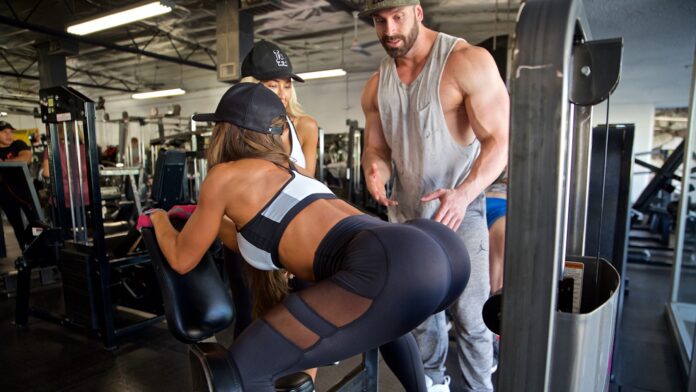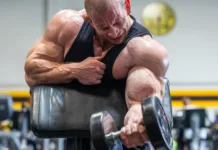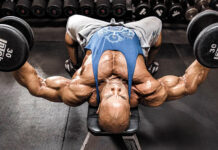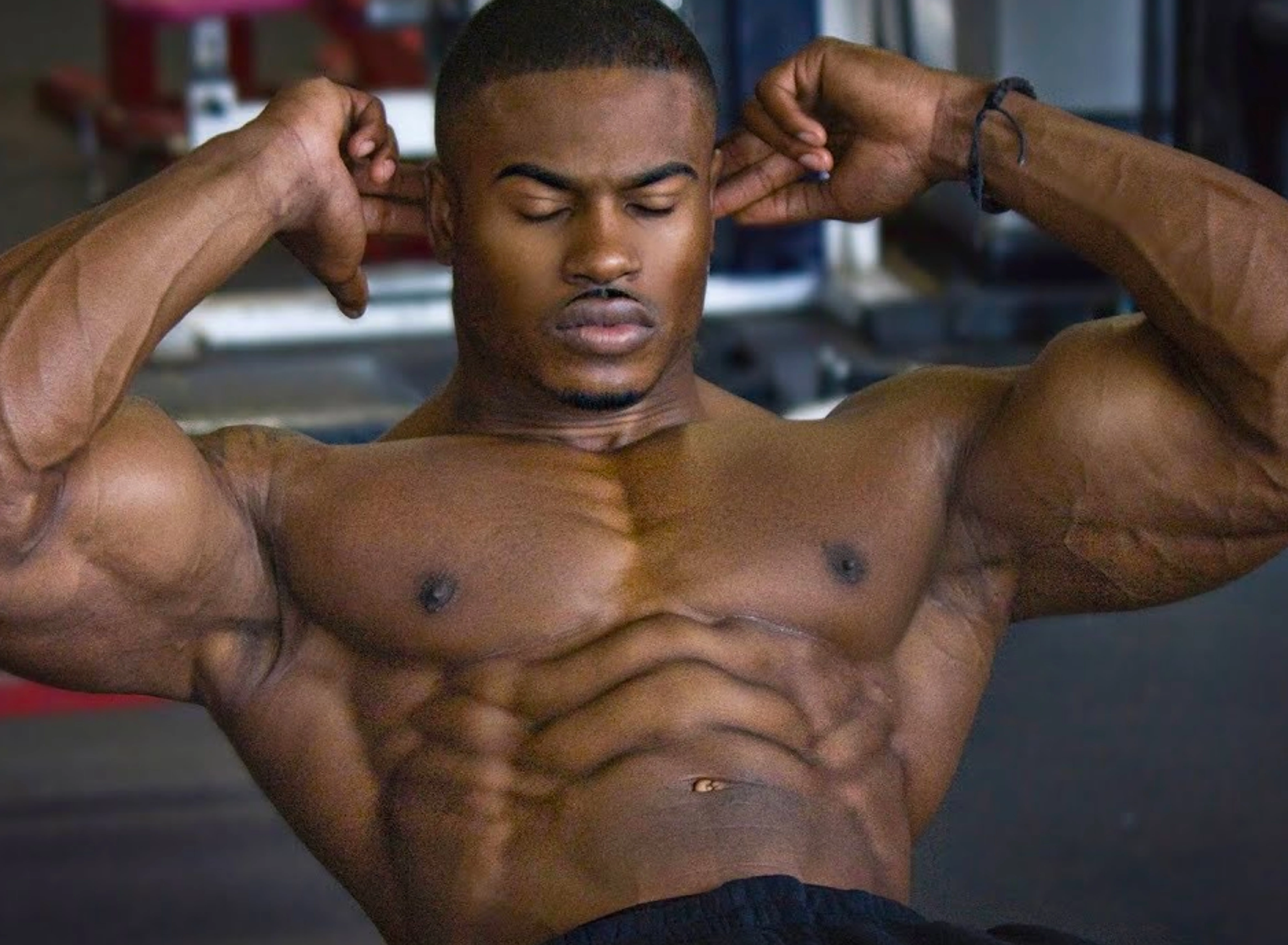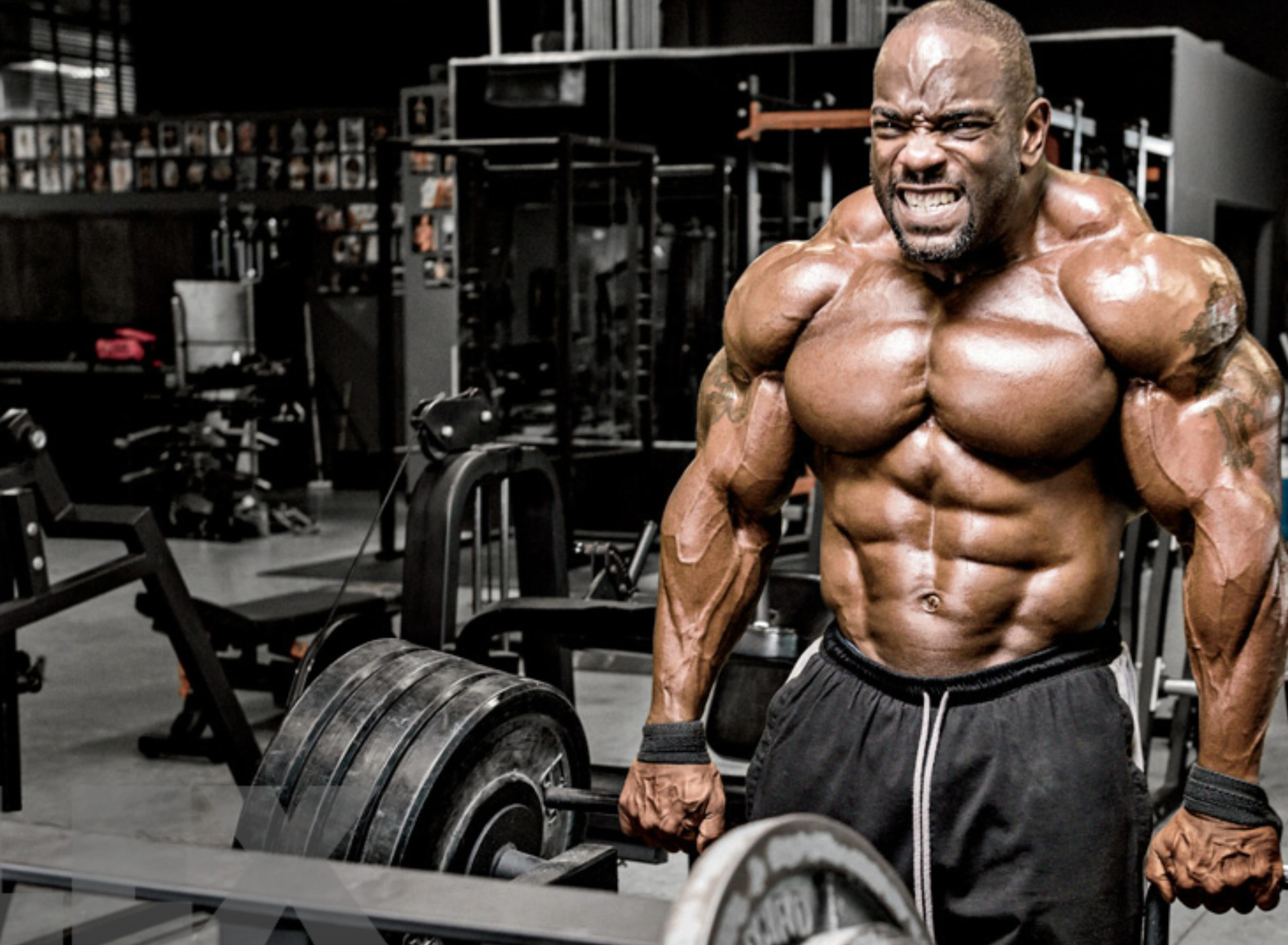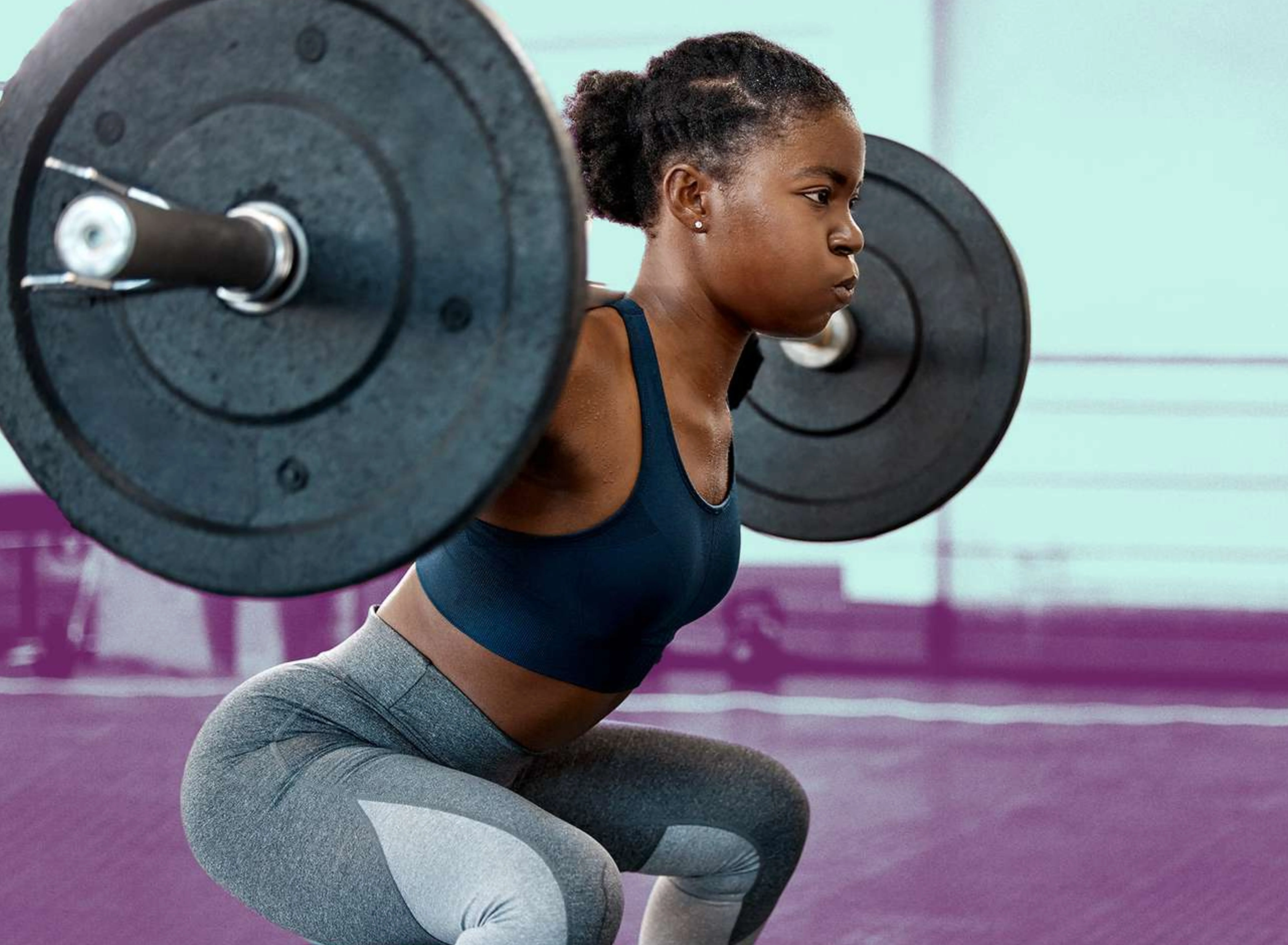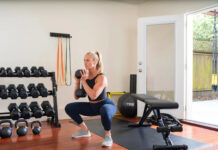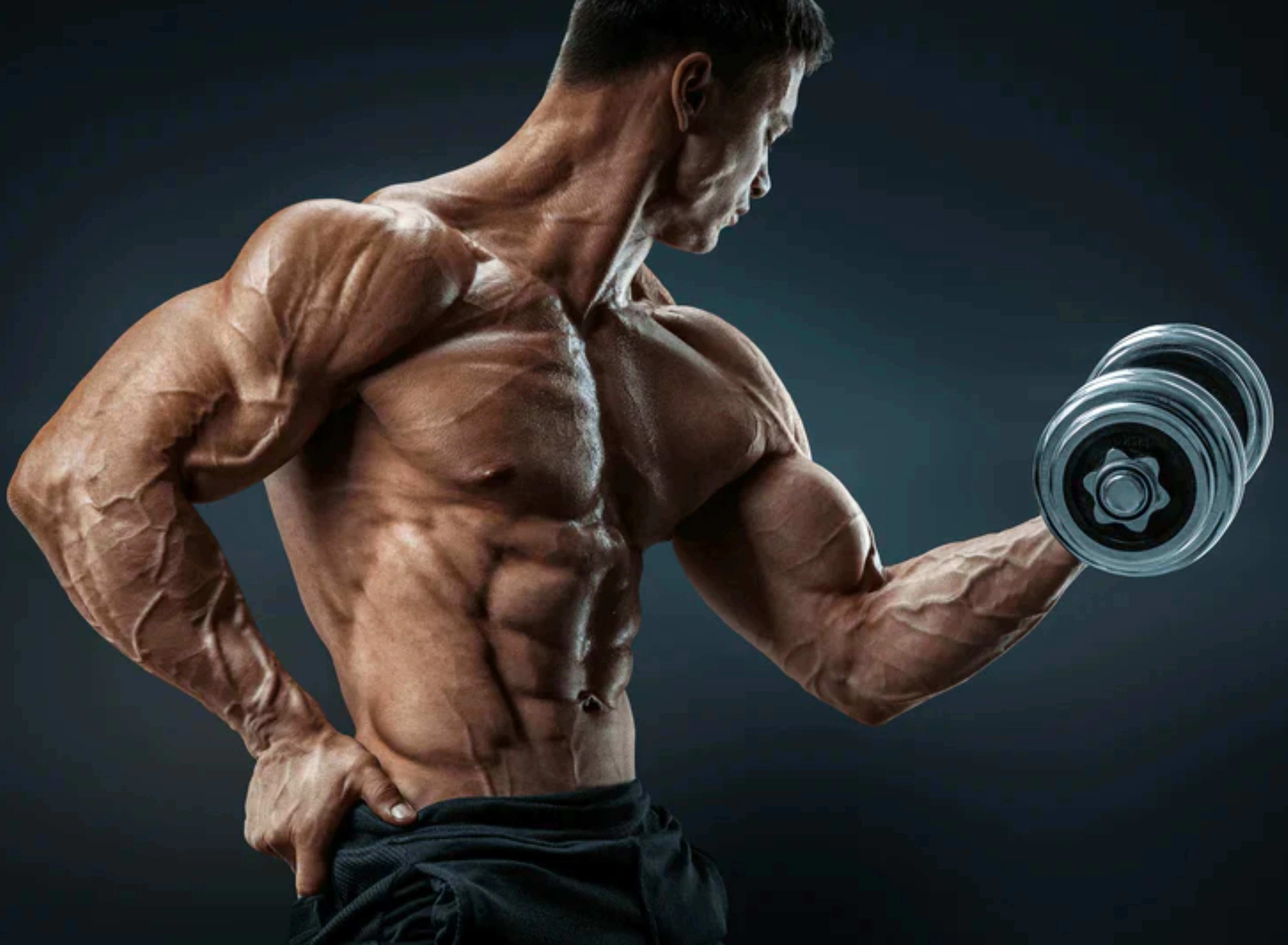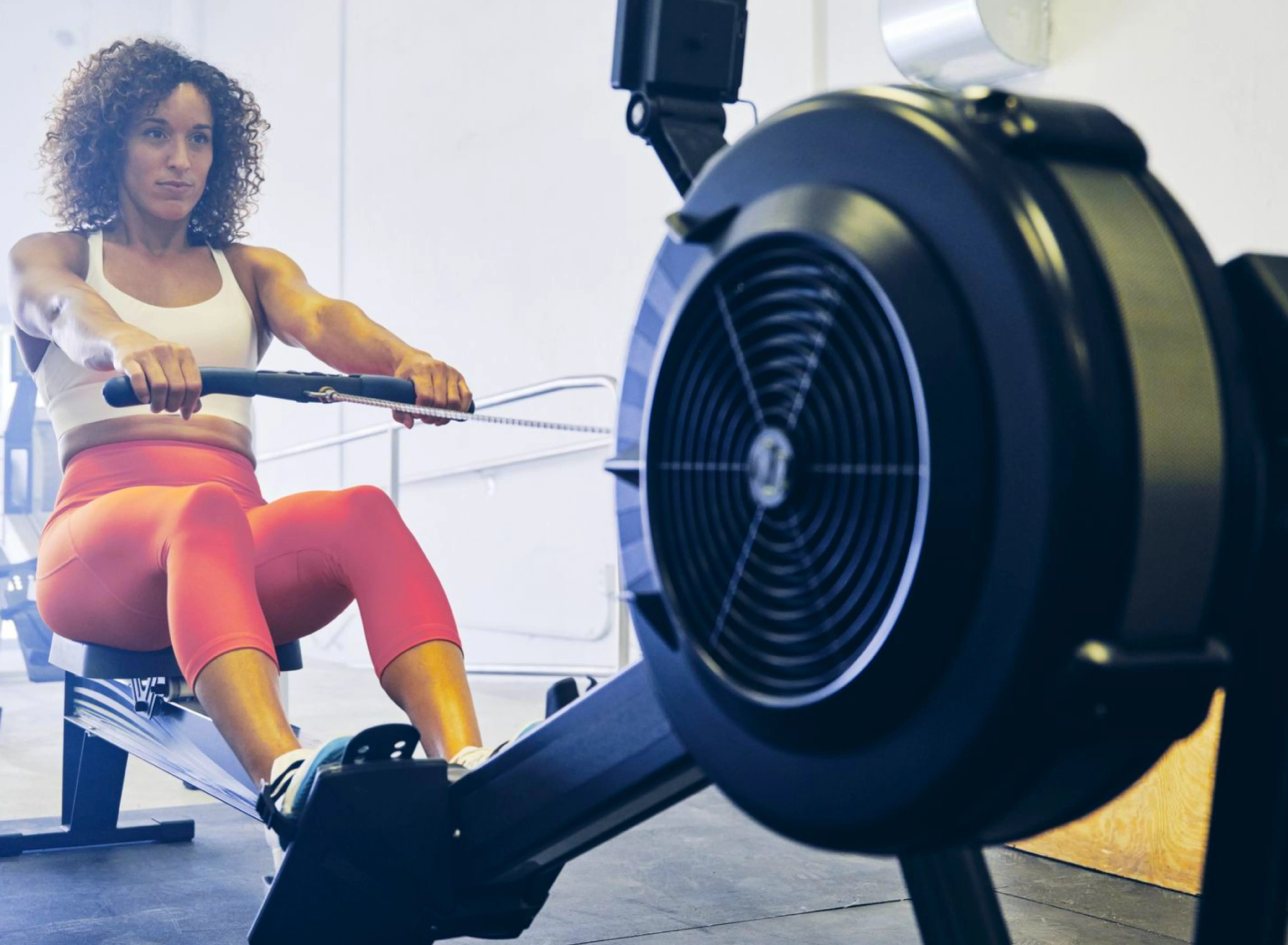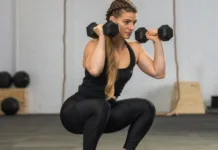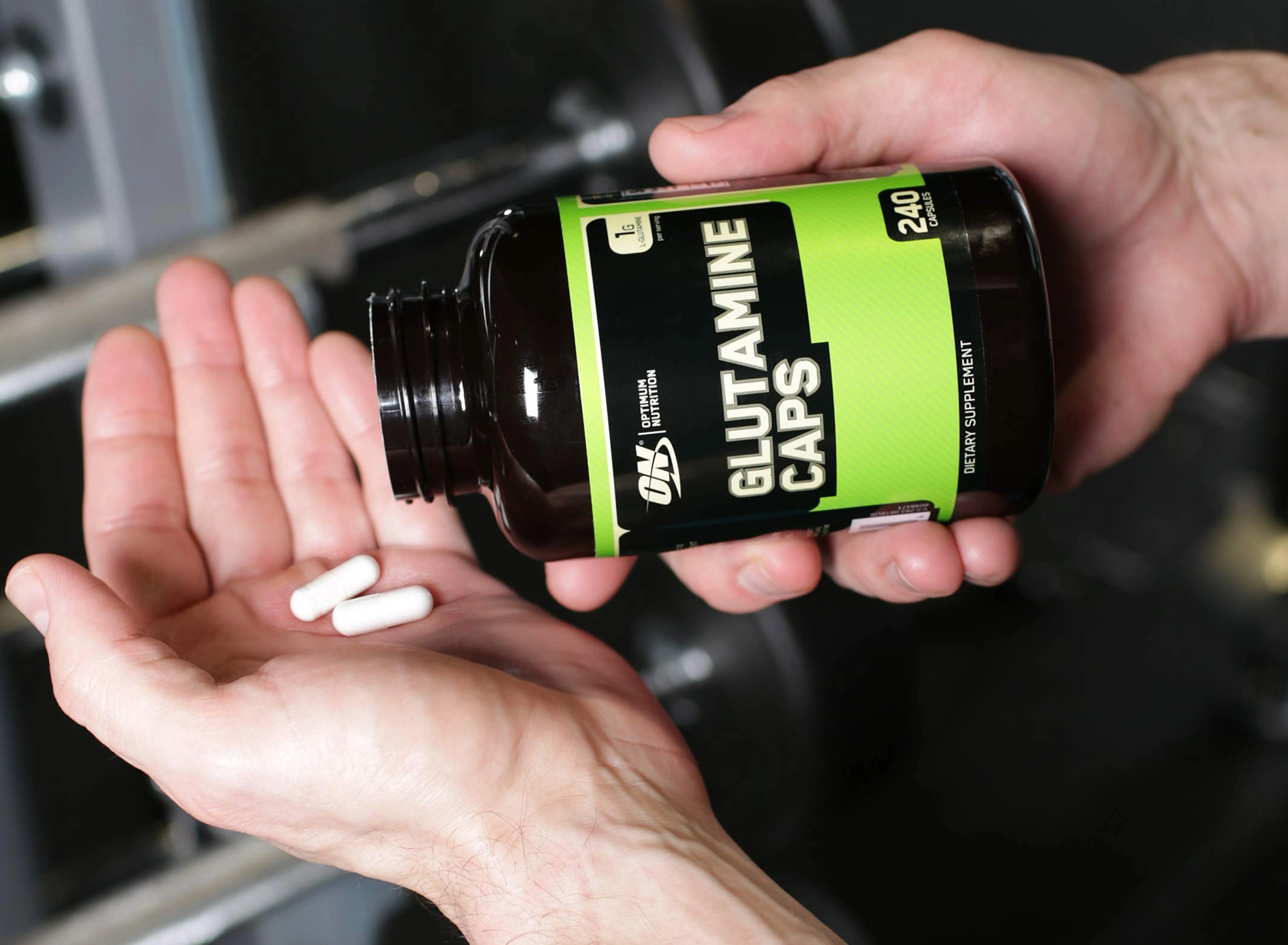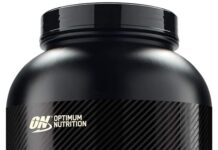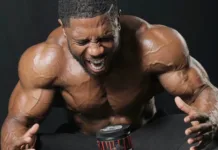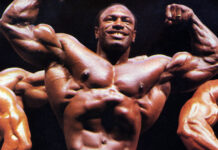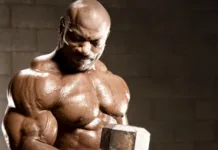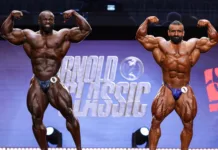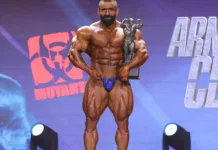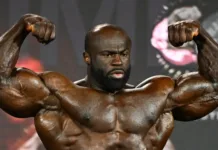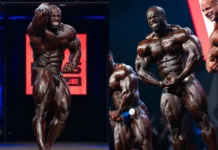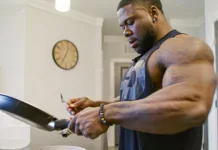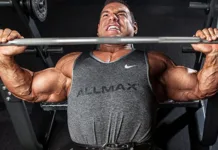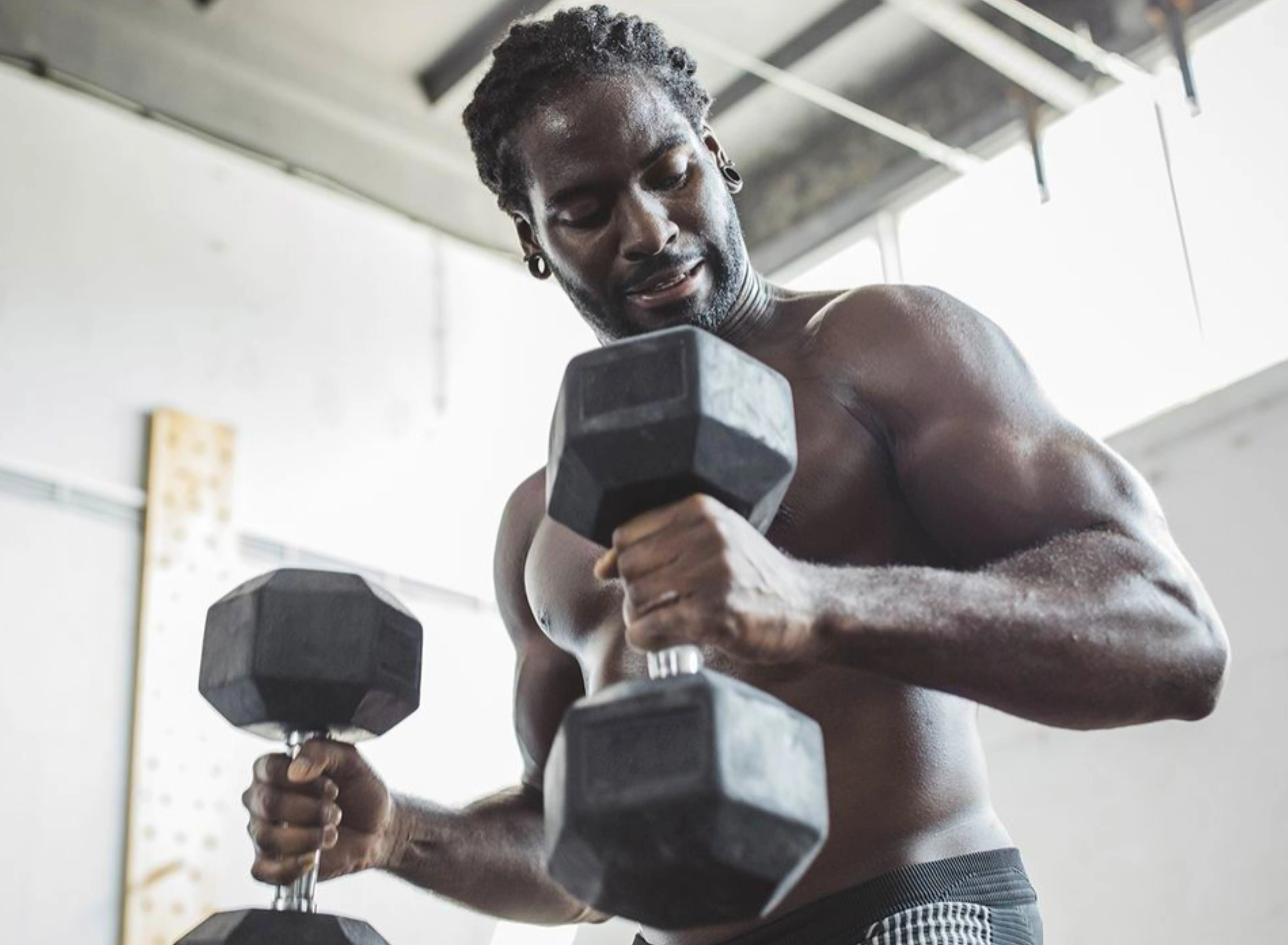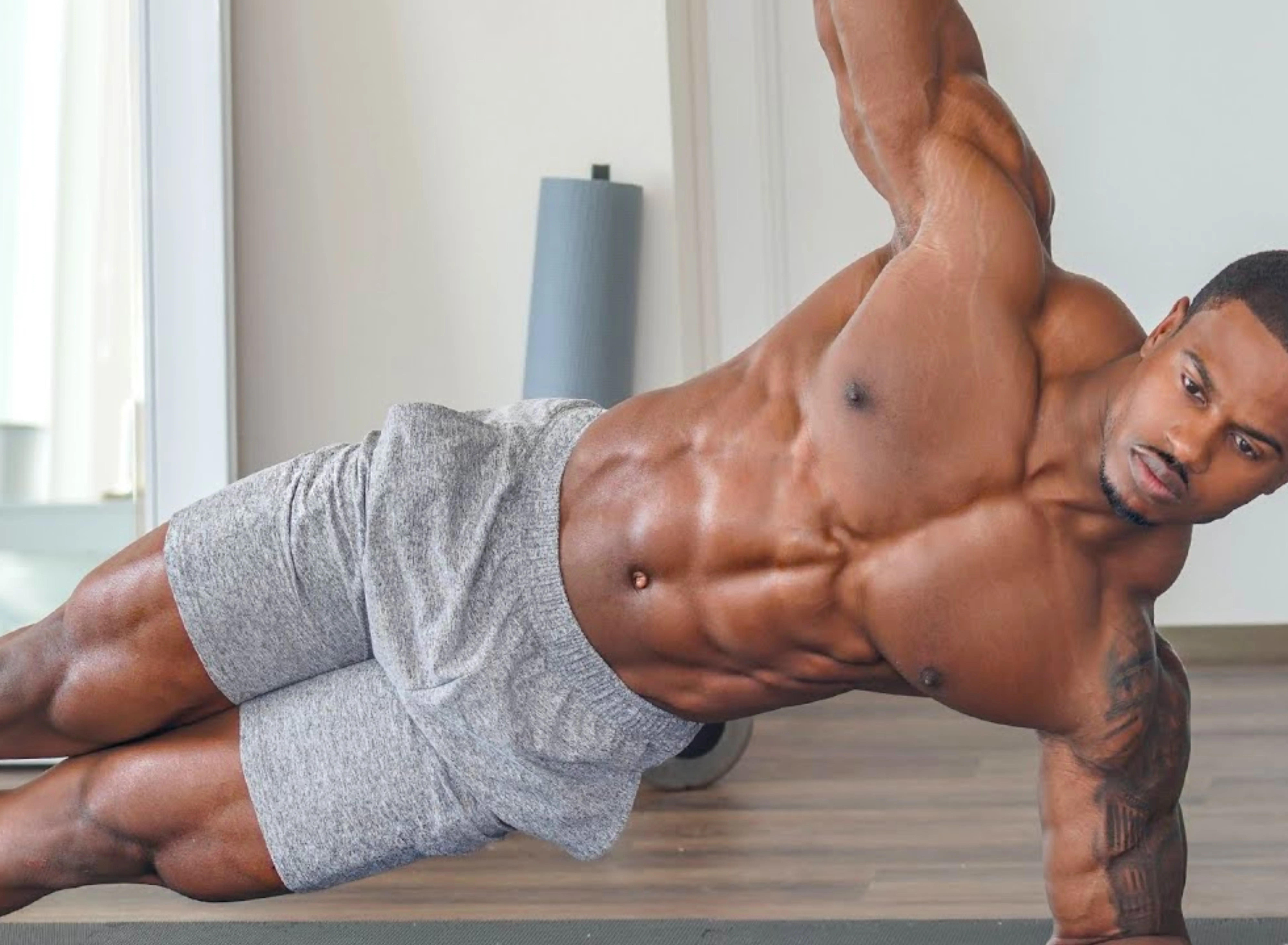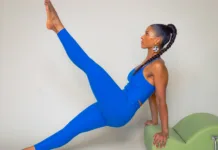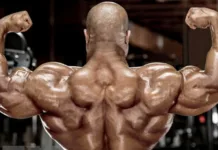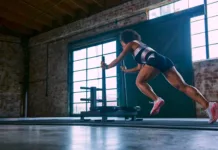Having strong hips (Abductor and Adductor Muscles) is an integral part of sports performance, injury prevention, and maintaining mobility as you age. The adductors are an important muscle group that contributes to hip strength and mobility.
In terms of strength training, the adductors are often overlooked because they can be difficult to properly train.
In this article, we’ll detail the function of the adductors, where they’re located, some exercises to strengthen them, and a few tips to consider when training them.
What are the adductors?
The adductors are an important group of muscles located on your inner thighs that serve to bring your legs toward the center of your body.
This motion of bringing your legs inward is called adduction — not to be confused with the term “abduction,” which means just the opposite.
The adductors span from various points on the public bone to several locations on the backs of the femurs. For this reason, they are often referred to as the “groin muscles”.
If you squeeze your legs together, you’ll feel the muscles of your inner thigh activating — these are the adductors.
Let’s face it focusing on the smaller muscles of the hips, such as the abductors and adductors, really isn’t as sexy as focusing on the larger muscles of the body such as the quads, glutes, chest, shoulders, and back. However, proportional strength on both sides of a joint is critical not only for overall muscle function and athletic performance but also for joint health.
More often than not the topic of proportional strength is discussed in terms of anteroposterior muscle pairs such as the hip flexors and extensors or knee flexors and extensors. However, the same concept is just as applicable to the medial and lateral sides of joints, particularly the hips. In this case, having the inner and outer thighs, or adductors and abductors, be evenly balanced in terms of strength can play a critical role in hip health, lumbopelvic hip function, low back issues, and even knee health.
While proper coaching, cueing, and instruction of foundational movement patterns such as squats, hinges, lunges, and lateral lunges with eccentric isometrics will help remedy a majority of the mediolateral imbalances in the hips, periodically implementing exercises that specifically target the hip abductors and adductors can be beneficial and quite therapeutic. Although there are a number of drills that do this, here are some of my personal favorites.
 Stop Neglecting Your Abductor and Adductor Muscles
Stop Neglecting Your Abductor and Adductor Muscles
Side Windmill Planks
The side windmill plank is one of the best drills for targeting the abductors or outer hip muscles. Additionally, side windmill planks represent a unique yet highly effective full-body stabilization and core activation drill that targets a variety of muscles from head to toe.
With that said, the ability to transmit force and coordinate neuromuscular recruitment between the hips, core, and upper torso is vital for athletic performance as well as heavy strength training. The side windmill plank is one of the few exercises that require the hips (especially the smaller glute medius muscles), upper torso, core, and feet to work together synergistically in one controlled high-tension isometric.
Essentially, what you’re doing during the windmill plank is resisting lateral flexion of the spine and lateral hip collapse as gravity is attempting to drive your hips down towards the floor. To fight these forces you’ll be required to fire the glute medius (outer hips), internal obliques, external obliques, and quadratus lumborum muscles of your core.
For individuals who struggle with valgus hip and knee collapse during movements such as squats (i.e. knee cave), these can be incredibly beneficial. However, most lifters can benefit from periodically including these into their routine. Here are several of my favorite advanced variations of the side windmill plank as I show them alongside my awesome client and NPC figure competitor Leslie Petch. Read more about side windmill planks here.
Copenhagen Side Planks
The Copenhagen plank is essentially equivalent to the side windmill plank discussed above except it targets the inner thighs and hip adductors instead. Similar to the side windmill plank is also crushes the obliques and core.
That being said, over the years more attention has been given to the abductors. That’s likely due to the fact that falling into valgus collapse or manifesting significant inward knee collapse is arguably more problematic than having too much external rotation or lateral knee spread, although neither is desirable.
Unfortunately, this trend has given rise to a common scenario in which athletes tend to overspread their knees and hips when squatting, produce excessive external rotation of the hips, display a poor ratio of abductor/adductor strength, and produce excessive external rotation of the feet (outward toe flare). This can lead to groin injuries, inflammation of the IT band, various knee and hip issues (particularly near the outer regions), and low back pain.
Although proper coaching, cueing, and instruction of foundational movement patterns such as squats, hinges, lunges, and lateral lunges performed with eccentric isometrics will help remedy a majority of these issues, periodically implementing exercises such as the Copenhagen plank that target the hip adductors and groin musculature is also warranted. Here are several of my go-to Copenhagen plank variations. If you need to regress these try placing your knee and shin on the bench with a bent leg position rather than placing your foot on the bench with a straight leg position. Read more about Copenhagen side Planks here.
If you really want to get the most bang for your buck from Copenhagen planks try performing them with half your foot or forefoot off the bench as I have MLB pro baseball player Austin Meadows doing here. I call this the Copenhagen plank 2.0.
The primary goal when using the Copenhagen plank is to target the adductors. However, to fully engage the adductors and inner thighs requires 2 primary functions to occur: one is, obviously, the execution of an adduction force (squeezing the legs together), the other, less commonly known, is the internal rotation of the hip accompanied by foot adduction. In fact, to fully engage the adductors requires the hip and foot to slightly internally rotate or point inward (i.e. pigeon-toed) as this allows a slight but natural degree of internal tibial torsion that’s necessary in order to fully activate the inner thigh musculature. In fact, when performing adduction motions, particularly when the foot and ankle complex move near the midline of the body, preventing the hip and foot from slightly internally rotating represents a dysfunctional position as an inward rotation of the hip and foot adduction should almost always accompany complete hip adduction.
When the entire medial portion of the foot is pressed into the bench the athlete is prevented from completing the last several inches of internal hip rotation and foot adduction. As a result, they’re unable to fulfill the various functional tasks necessary to fully engage and activate the musculature of the hip adductors. Once the forefoot or top half of the foot is free to adduct and rotate inwardly several inches, this not only maximally engages the hip adductors, it also feels exceptionally more natural and comfortable as the hip is no longer being torqued or pulled on but instead can settle into its most biomechanically natural position.
In fact, one of the most common complaints about Copenhagen planks is that they hurt the knees, especially the inner region. The Copenhagen plank 2.0 addresses this and fully remedies it. The advanced variations are shown above with the suspension systems and bands also provide a similar effect since the foot can hang off the edge of the strap or band.
Here’s how to progress the movement further as NFL athlete Ameer Abdullah shows here with the bottom leg driving into hip flexion which further blasts the hips and the core.
Perhaps the only downfall of the traditional Copenhagen plank is that it simply involves an isometric contraction rather than repeated concentric and eccentric contractions of the adductor muscles. Although the basic version can be modified to allow the hips to move up and down to target the adductors isotonically, this position tends to feel a bit unnatural as the lifter must disengage their core musculature and essentially allow their hips to collapse and sag for this respective motion to occur. One simple and superior remedy to this is the Copenhagen cable adduction side windmill plank exercise as demonstrated here by my awesome clients Leslie Petch with 3 different variations.
Also huge shoutout to Leslie for coming up with this awesome exercise as it truly is ingenious and incredibly effective. In fact, this has 4 unique benefits.
1. As previously mentioned it allows the adductor muscles to be targeted via concentric shortening as well as eccentric elongation throughout the set rather than simply an isometric hold. For those who need both stretching and strengthening of their adductors (something a majority of athletes could use) this one is a gem.
2. Most adduction exercises that involves concentric and eccentric phases (i.e. standing or seated adduction machines), rarely involve a stabilization component not to mention a significant degree of core activation. This variation has both.
3. This is one of the few exercises that simultaneously targets both the adductors and abductors at once. That’s because the bottom leg is holding a traditional side windmill plank thereby targeting the abductors and outer hips of that leg, while the top leg is performing adduction motions thereby targeting the adductors and inner hips of that side. In other words, it represents the perfect 2-in-1 exercise.
4. In order to produce a perfectly vertical force on the cable or band during the adduction phase, this variation requires the lifter to find a perfectly in-line side plank position (something many athletes struggle with) otherwise he or she will pull at an angle and destabilize his or her body.
External And Internal Hip Rotation
Many examples of PAILS and RAILS we currently see in the fitness industry often resemble contortionist movements that are just as, if not more extreme than what we witness in more aggressive yoga classes that have been shown to contribute to injuries. This may or may not have been the original intention of FRC training. However, the drills themselves, regardless of the original intention, have quickly turned into a contortionist form of training that more closely resembles something we might see at the circus, not sport or everyday life. With that said, not all PAILS and RAILS involve extreme positions.
Additionally, a small fraction of them do involve a degree of eccentric loading. Simply, any movement including yoga, PAILS, RAILS, or strength training, or any other form of exercise can easily be modified to be therapeutic provided it applies foundational elements of kinesiology, particularly when it comes to optimizing (not maximizing) the range of motion. Unfortunately, and as previously stated, for many movement modalities such as PAILS and RAILS it can be difficult to find the appropriate positions and ROM due to the lack of eccentric loading.
Applying the eccentric isometric method to any of these protocols produces enhanced sensory feedback and helps ensure they are performed with optimal quality of movement and ROM. Here’s an example of how to apply eccentric isometrics to internal and external hip rotation by applying load/tension to the positions. Also, shoutout to Bethany Shadburne and Austen Cochran as this is an eccentric isometric modification of an exercise I stole from them.
Notice the more compact yet optimal range of motion in the hips. This degree of internal and external rotation represents the natural or optimal levels of movement we might expect to see during everyday life or in sports. Moving substantially farther than this, although possible for some, reinforces extreme positions we typically associate with injuries, especially to the knees (i.e. extreme valgus collapse), and could increase the risk of injury. Read more about a proper range of motion, mobility, and flexibility here.
Lateral Lunges
When it comes to targeting the inner and outer hips as well as the larger muscles of the legs including the quads, glutes, and hamstrings, perhaps the most functional movements are lateral lunges. Here’s an example of one of my favorite variations shown by NFL quarterback Taylor Heinicke.
Besides mimicking movements we see in sports and athletic events lateral lunges are also phenomenal for improving hip mobility, stability, and motor control. As one hip moves into external rotation the other moves into internal rotation thereby addressing key elements of muscle function.
Additionally, the abductors and adductor muscles both get targeted eccentrically and concentrically thereby making them very effective functional strength and hypertrophy exercises. Here are some more of my favorite variations I showcase alongside pro basketball players Yelena Leuchenka and Leslie Petch.
The key with lateral lunges as with any exercise is to perform them properly. With that said, here are 8 important cues when it comes to mastering lateral lunges:
1. Keep both feet relatively straight. Most folks have a tendency to allow one or both feet to externally rotate which represents faulty mechanics and improper activation patterns.
2. Keep a majority of the weight on the squatting leg which is primarily the working leg.
3. Don’t allow your body and center of mass to shift away from the squatting leg. Most of your weight should be maintained on that leg and not shift to the straight leg.
4. Don’t go past 90 degrees with the squatting leg. Attempting to use an excessive range of motion on lateral lunges is a recipe for disaster as you’re not only compromising the length-tension relationship of your muscle fibers, you’re also placing undue stress on the hips, groin, and knees.
5. Keep both feet relatively in line with each other from a lateral perspective. If you were to view the lateral lunge from the side both feet should be fairly inline although the back foot can drift several inches behind the working/squatting leg provided the toe stays relatively straight.
6. Focus on sitting into the hip of the squatting leg and not allowing excessive anterior knee drift while simultaneously keeping the chest out and core tight.
7. Use slow and controlled eccentric isometrics to optimize your body mechanics on lateral lunges.
8. Gradually build into the 90 degrees stretched position. The lateral lunge can be a difficult movement for many folks since it’s a bit of a unique position and requires a high level of mobility and stability. If you’re not ready for it and you push the range of motion too soon you could pull a muscle. I recommend gradually building into the range of motion by starting with partials (45 degrees of knee bend) by only going halfway down and out. With each rep or set or workout session gradually build up as your body naturally and comfortably allows.
Once you master your lateral lunges you can further enhance their sport specificity by adding a strong acceleration and deceleration component as I have NFL athlete Marquell Beckwith showing here with a manual accelerated partner lateral lunge.
Lateral Banded March
If you’re looking for a simple way to improve your hip strength as well as your lower body alignment try the band resisted lateral march. The key with this is to keep the feet relatively straight and to control every inch of the exercise rather than allowing the bands to yank you into position. It’s also a great way to correct and address foot and ankle alignment as most individuals will struggle with this. Brace the core and keep the hips set back throughout while maintaining full body tension just as my awesome figure athlete Leslie Petch is doing here.
It’s also a great exercise to correct and address valgus knee or valgus ankle collapse on squats or any movement. On a side note, this drill can also be done with no bands or loading while simply focusing purely on alignment, form, and smooth motions. Doing so is actually surprisingly intense yet effective as a daily activation drill to improve lower body mechanics and alignment.
Lateral Shuffle Farmers Walk
Here I have NFL athlete Ameer Abdullah performing a lateral farmer’s walk with the trap bar. Although it’s less of a walk and more of a lateral march or controlled shuffle, the side-to-side carry is a great drill for working the inner and outer hips while teaching motor control in the mediolateral direction or front plane.
This has tremendous transfer for athletes while also helping to bulletproof the joints and prepare the body to control and absorb force during side-to-side movements. Focus on sitting back into a slight athletic stance with a moderate knee bend and bracing the daylights out of your core and maintaining full-body tension.
When it comes to targeting the inner and outer hips, it doesn’t get any simpler than these 2 bands resisted drills shown by NFL athletes Austin Larkin and Marcelis Branch. Essentially they’re performing band resisted abduction and adduction while simultaneously holding a strict single leg stand with perfect posture.
Besides working the abductor and adductor of the leg that is attached to the band, the support leg gets also gets pummeled but in the opposite way relative to the moving limb. For instance, if the moving limb is resisting abduction by pulling into adduction then the supporting leg abductors will also get hammered as they have to essentially resist adduction and the valgus collapse throughout.
In other words, these are great 2 in 1 drills as they act as inner & outer hip exercises while also working incredibly well as foot and ankle stability drills for improving anti-supination and anti-pronation. As an added bonus there’s some moderate tension rotational forces the athlete must resist by engaging their core.
Lateral Band Resisted Squats And Jumps
If you have trouble with valgus knee collapse, ankle pronation, or valgus ankle collapse during squats, hinges, deadlifts, or even jumping & landing, using a mini band in conjunction with lower body movements is a great remedy as you have to resist valgus forces even further. If the valgus collapse is occurring more at the level of the hips and knees then the band can be placed just above the knee joint.
If it’s occurring more so at the ankles then the band would be placed around the feet near the arches. Here’s an example of a jump squat exercise demonstrated by my awesome client Rami Baghdadi.
Ball Squeeze Upper Body Combos
The adductors and inner thigh muscles can easily be targeted on a number of upper body and core movements simply by placing a stability ball, medicine ball, foam roller, or bumper plate between the legs.
Besides blasting the inner thighs, this also has a tremendous impact on keeping the core musculature tight which does wonders for enhancing full-body tension not to mention alignment throughout the kinetic chain.
These can be particularly useful on bodyweight movements such as planks, pushups, inverted rows, and pullups where increased core activation and full-body tension translate to improved alignment throughout the kinetic chain. You can also add a band resisted on top of the ball for additional core and hip adductor activation or use a heavier medicine ball or plate.
Also shoutout to Ben for coming up with these last 2 pull-up variations which are incredibly brutal but effective for crushing the adductors and surrounding musculature.
Here’s another example of how to use the foam roller to correct knee raise positions.
If you want to blast your abductors and adductors through a full range of motion with both eccentric and concentric contractions while simultaneously reinforcing full-body tension, core activation, and rock-solid body alignment, look no further than these planking and bridging abduction & adduction cable drills. Also a huge shoutout to Leslie Petch for coming up with all of these incredibly awesome variations. Just be warned these are substantially more challenging than they look.
To perform these simply use any roller, slide-board, slider, or disc such as the FlexdiscFit which is my go-to tool for these, then connect a cable/band either to the device or to your ankle via ankle straps or use a mini band for bilateral abduction. Once positioned you can perform any plank or bear crawl abduction and adduction movement as well as glute bridging (straight or bent leg) abduction and adduction exercises. These can also be performed on a slick hardwood floor by wearing socks and using a small exercise band. Use code DRJOEL to get a discount off FLEXDISCS here.
Although the double leg variations are very effective and mimic machine abduction and adduction machines, the single-leg planking variations offer a few unique benefits.
First, the single-leg variations allow a greater range of motion in both the contracted and stretched positions ultimately providing greater mobility benefits. Secondly, the offset forces blast the core and abdominals particularly throughout the transverse abs and obliques via the anti-rotation and anti-lateral flexion forces that are acting on the lifter’s torso and spine and he or she must resist. Lastly, because you’ll inevitably be holding a single leg plank and all of your weight on the support leg not only will the quads and hip flexors of that leg be intensely taxed, you’ll also be using the abductors and adductors of that same leg isometrically to resist rotation in whichever direction the cable is pulling.
Here are a few more double leg variations including pushups that are incredibly brutal but also unbelievably effective for targeting the core, hips, and upper body.
Eccentric Isometric Rotational Lifts and Chops
Although not necessarily hip-specific drills, rotational movements do, in fact, involve a significant level of the abductor and adductor musculature to help stabilize the body as a means of transmitting rotational force up the kinetic chain via the oblique slings. In fact, for rotational sports that involve swinging or hitting such as baseball, golf, tennis, and other striking sports, the outer and inner hips are working aggressively to produce power and stabilize the lumbopelvic hip complex during the swing.
With that said my go-to rotational movements are actually eccentric isometric chops and lifts. Here’s why.
Most rotational drills we see only reinforce pre-existing levels of rotational movement and do very little to enhance it, particularly those that occur rapidly. For instance, if there’s a weak link in the kinetic chain or a small compensation pattern it’s almost impossible to diagnose or correct during more traditional rotational movements. This is where the eccentric isometric comes in.
Like all the other eccentric isometrics I’ve highlighted over the years, the rotational eccentric isometric allows the lifter to hone in on their movement, self-assess where the various issues may be occurring (via the sense of feel), and then fine-tune their body mechanics based on the enhanced sensory feedback produced by the eccentric isometric. In reality, it’s fulfilling the same purpose as all other eccentric isometrics I post such as squats, hinges, lunges, press, and pulls, except it’s applied to rotational movement or movement occurring in the transverse plane rather than the sagittal or frontal planes.
And just like any other eccentric isometric, the goal is never maximal or extreme range of motion but rather a natural range of motion which ends up being slightly more compact than what most coaches and trainers typically teach. Yes, you can go further on the ROM but you’ll be sacrificing activation, stability, motor control, and proprioception not to mention ingraining faulty body mechanics as the rotational movements that we see in sports don’t involve inordinately large rotational ROMs but rather natural or optimal ROM in the transverse plane.
Excessive ROM during rotational movements tends to compromise hip drive and lower body recruitment often resulting in over-rotating rather than relying on the hip drive. Remember, the functional purpose of most rotational movements is to allow the hips to fully coil, not to simply rotate to the point where you feel like your spine is going to snap.
Ball-Band combos for alignment, neutrality, Joint centration, & co-contraction
When it comes to proper body positioning during squats, hinges, and just about any other standing exercise, a critical element is maintaining neutral mediolateral hip and foot alignment. In other words, we want to avoid extreme external rotation (hip, knee, or toe flare) or internal rotation (hip or knee valgus collapse), as well as extreme ankle pronation or supination. With that said, learning how to co-contract the abductors and adductors is critical not only as a means of stabilizing the hips mediolaterally and maintaining neutrality, but also to improve force production and force absorption throughout the lower body.
While most folks tend to have an easier time firing their outer hips and abductors during lower body exercises such as squats, learning how to fire the adductors while keeping neutral alignment in the hips is oftentimes easier said than done. In fact, without proper adductor activation, most folks tend to push their knees excessively apart and move too far into the external rotation as a means of avoiding valgus collapse. This has become more and more commonplace in strength training settings. While avoiding valgus knee collapse is of the utmost importance, we also don’t want to move too far in the opposite direction and end up overspreading the knees and hips. Simply put, we want to maintain neutral alignment.
- Shop for Sports & Fitness products at eVitamins.com!
- $5.95 Ground Shipping On Any Purchase In The US! – Shop Now!
Furthermore, understanding how to grip the feet into the floor and push the ankles out just enough so that the individual maintains a strong neutral foot position with ample toe activation is also critical.
Unfortunately, most folks have trouble implementing both of these elements simultaneously (firing the adductors while also activating the feet). For instance, telling an individual to fire the adductors may lead to valgus collapse as well as ankle pronation. In contrast, coaching an individual to grip their feet and spread the floor slightly can often lead to over-spreading and excessive supination as well as excessive external rotation of the hips.
The key is understanding how to implement both of these cues together by co-contracting the abductors and adductors with ample foot activation, all without going too extreme into either external or internal rotation. Unfortunately, most individuals struggle with this as previously mentioned.
The band-ball method helps resolve this by teaching the perfect balance of adductor activation and foot spread all while maintaining neutral alignment of the hips. In fact, it’s almost impossible to screw these up as you can’t go too extreme in any direction or you will be unable to hold the ball and band in place throughout the movement while keeping your feet straight.
An added benefit relates to the concept of co-contraction. During movements such as squats, it is important to create high levels of hamstring activation during the eccentric phase of the movement in order to assist with co-contraction around the knee and help the individual pull themselves into the proper 90-degree position. Adduction activation has been shown to directly enhance hamstring function. Performing squats with the band-ball method forces the lifter to fire their adductors in order to hold the ball in place (while the mini band prevents valgus collapse) which, in turn, reinforces co-contraction during the eccentric phase due to enhanced hamstring firing. A similar principle can be observed with leg curls and glutes bridges as the added adduction stimulus further enhance hamstring recruitment.
Here are some of my favorite band-ball variations shown by my awesome client Leslie Petch as she uses a medium tension mini band combined with a slam ball. Also, credit to Leslie for helping me come up with several of these.
Eccentric Isometric Rotational Side Planks & Copenhagen Planks
When it comes to maximizing activation, recruitment patterns, mobility, strength, and stability throughout a muscle, perhaps the single most effective training methodology is eccentric isometrics. That’s because eccentric isometrics maximize muscle spindle activation and proprioceptive feedback. This not only helps maximize neuromuscular recruitment, but it also helps fine-tune movement and find the ideal degrees of mobility with a proper range of motion rather than an excessive range of motion. Read more about eccentric isometrics in my book MOVEMENT REDEFINED.
While many of the variations shown in this article, such as the band and cable abduction and adduction exercises, can be combined with eccentric isometrics, it’s important to understand that from a functional standpoint hip external and internal rotation rarely occur in an isolated fashion particularly when it comes to movements with larger ranges of motion. Instead, we often use hip internal and external rotation in conjunction with rotational movements of the body and torso. For instance, when an athlete cuts or turns on the field, or when he or she is running, there will inevitably be a rotation of both the torso and the hips simultaneously, not one or the other.
With that in mind, we can see why the anterior and posterior oblique slings are so vital for movement as almost all movements require the musculature of these systems to work synchronously to produce functional movement patterns while simultaneously stabilizing the body. Read more about oblique slings here.
Furthermore, when examining the oblique slings we see that nearly all the muscles of the human body are involved to varying degrees in most movements, particularly those that occur in sports. That being said, in order to perform an eccentric isometric and produce a loaded stretch throughout the primary muscles involved in rotational body movements, we will, inevitably, need to perform movements that actively stretch and eccentrically elongate most muscles of the body in an eccentric rotational fashion.
By taking the basic side windmill plank and side Copenhagen plank then applying rotational force vectors, not only can we perform eccentric isometrics that target the musculature of the inner and outer hips, we can also eccentrically target nearly all of the rotational muscles of the body while achieving the functional levels of external and internal hip rotation we’d likely witness in sports.
Isometric Agility Swivels
Over the past several years, the fitness industry has consistently promoted excessive external and internal rotation of the hip joint with many so-called experts recommending extreme end range of motion and mobility drills to “unlock the hips” via mobility exercises, many of which resemble contortionist movements. While ample levels of internal and external rotation of the hips are critical not only for sports but also for overall muscle function and everyday life, the level of functional external and internal rotation at the hip joint that’s both needed and optimal is significantly more conservative than what the fitness industry has been pushing lately.
Unfortunately, the ideology that maximal ROM and optimal ROM are one and the same has led to a host of undesirable training methods. As we know, based on research and experiential data, maximal range of motion and optimal range of motion are rarely the same. Read more here.
Additionally, many coaches will use examples taken from sports and athletic activities to highlight visually extreme positions we might occasionally see in sports as a means of justifying large range of motion movements for the hips, particularly when it comes to isolating external and internal rotation. While at first glance many sports, particularly those that involve more aggressive hip and lower body movements, do appear to involve a fairly large ROM at the hip joint and significant external and internal rotation, few if any of these aggressive ranges of motion positions occur in isolation. In fact, when the hips are isolated without the ability to move the torso, the range of motion should be fairly limited to avoid compromised positions that can lead to hip laxity and capsular issues.
With that said most of the more aggressive positions we observe in sports that involve external and internal rotation of the hips involve significant levels of torso rotation. Simply put, when it comes to hip positions that involve larger ROM internally or externally, these rarely, if ever, occur in isolation nor should they. Instead, they appear to happen in tandem with torso rotation. From a functional standpoint, this makes perfect sense as anytime an individual externally or internally rotates their hip it’s for the purpose of creating lateral or rotational force vectors rather than linear vectors. In other words, they’re attempting to create force in a direction other than perfectly straight ahead.
Unfortunately, many of the extreme drills and end-range training exercises we see in the industry involve scenarios that are arguably quite dysfunctional and flawed as they require the individual to use very large degrees of external and internal hip rotation while keeping their torsos perfectly square and fixed. From a functional standpoint, this would not only be potentially compromising to the structures of the hip joint but in no way do they represent or simulate any movement we would ever see in sports or athletic activities. In fact, performing large degrees of external and internal hip rotation with a perfectly square torso would describe 1 of 2 scenarios both of which involve neuromuscular malfunctions or neuromuscular hiccups as I like to call them.
-
The individual attempted to turn and cut but had a neuromuscular malfunction that prevented his or her torso from following their hips. In other words, their torso and hips were mismatched. This is likely a scenario in which his or her body needed to turn but the core musculature simply did not produce the activation needed to cause the desired movement at the torso.
-
The individual was attempting to move in a straight or linear fashion (i.e. straight-line speed) while keeping their torso square but unfortunately experienced a neuromuscular malfunction causing their hips to significantly deviate laterally rather than stay in line with their torso. This is likely a scenario in which the individual had very poor motor control and hip stability.
Simply put, in either scenario, there was a mismatch of force vectors causing a portion or segment of the body to move in the direction of the desired force vectors while the other segment(s) moved in another undesirable direction.
With that said, here’s a great drill that emphasizes functional external and internal hip rotation and transfers incredibly well to athletic performance. I refer to these as Isometric Agility Swivels. It simply takes a more extreme position as would occur during agility on the field, such as cutting or quickly moving to the opposite direction and deconstructs the movement sequence by sequence to simulate the same activation patterns we would see on the field. In the field of motor learning, this drill would be described as one that involves the same invariant features of general motor programs as those that occur during their on-field counterparts yet with different variant features such as the speed or velocity of movement.
Here’s an example of how to transfer the drill into on-the-field athletic performance.
Using these same theories of motor learning the isometric protocol not only allows us to spend greater time in these desired positions thereby enhancing technical efficiency, neural programming, and mobility, it also allows us to fine-tune and correct our mechanics by virtue of performing slow and isolated deconstructed sequences. Unfortunately, most explosive movements occur so rapidly that any neuromuscular deficiency in the movement is almost impossible to address or correct during the drill as it occurs too rapidly to catch.
On a similar note, here’s the slow-motion version of the above drill. If you pause the video you’ll notice lots of 90-degree joint angles, particularly in the hips. This is a result of repeatedly and consistently performing properly executed 90-degree eccentric isometrics. Simply put mastering eccentric isometrics on the foundational movement patterns will do more for your athletic performance and sprinting mechanics than any other form of training. Read more in my book MOVEMENT REDEFINED.
On a related note, many of the lateral movements and movements in the frontal plane recommended by fitness professionals often involve significant external rotation of both hips/feet at the same time. Similar to the above examples this would represent a mismatch of force vectors from a functional standpoint, not to mention potentially deleterious hip positions due to the extreme torque and dysfunctional positions.
There’s absolutely nothing wrong with externally rotating the feet and hips during movement, the caveat being that only one limb should externally rotate at any one time such as during cutting, rotating, or twisting. In fact, during most rotational movements, when one hip externally rotates the other hip should simultaneously internally rotate in order to match all the force vectors of the body with the desired movement.
Simply put, dual external rotation of both hips and legs at the same time represents 3 primary complications: 1) a mismatch of force vectors, 2) a biomechanically faulty position, and 3) a neuromuscular malfunction in which there is a neural misfiring of one or more groups of muscles, with the body attempting to move in one direction and one or more segments/limbs moving in the other.
Its also for this very reason that generally speaking I do not advocate squats or other bilateral movements with the feet externally rotated. Instead, I recommend a relatively straight foot position with neutral hip alignment, neither externally or internally rotated. That’s because the force vectors involved in most traditional bilateral strength training movements such as squats, deadlifts, hinges, and jumps, involve straight and linear force vectors not rotational or lateral vectors. Read more about force vectors and proper squat form and depth here.
However, this principle applies only to biomechanically sound 90-degree positions. If, in fact, the individual is dead set on performing biomechanically flawed movements with excessive range of motion and insists on going significantly deeper than 90 degrees on their loaded squats or other strength training movements, then one could make the argument that externally rotating the hips and feet would, in fact, be a safer and more effective way to perform these functionally flawed and dysfunctional positions.
On a side note, and as a semi-disclaimer, there may be rare instances where dual external rotation of both hips is necessary. However, for a majority of functional movements as well as general fitness exercises that are therapeutic and biomechanically sound, dual external rotation is rarely warranted and unilateral external rotation is optimal. The same is true of internal rotation. Therefore, training dual external rotation or dual internal rotation is likely setting the athlete up for potential injury and compromised activation patterns since movements we perform during training transfer to the field.
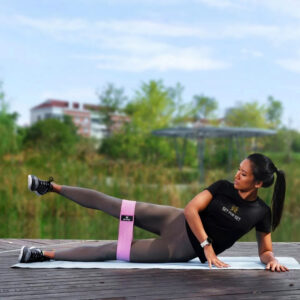
For More News And Daily Updates, Follow IFBNewsfeed.Org on Facebook, Twitter, and Instagram. Comment, Like, And Share With Everyone Who May Need To Be Updated With The Most Recent Fitness/Bodybuilding/Powerlifting And CrossFit News.
